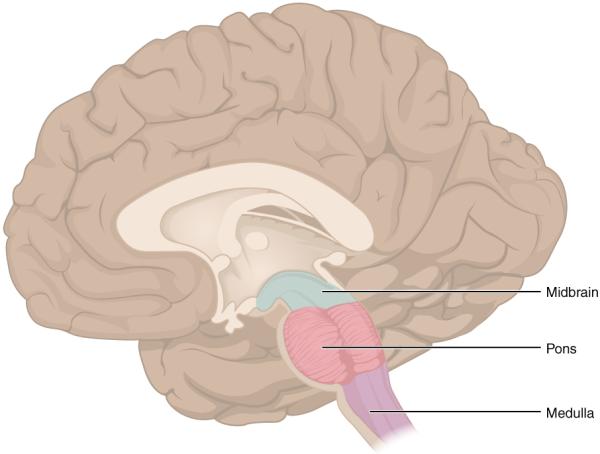A 50-year-old man’s rare condition caused by a catastrophic stroke leaves him unable to move, speak or perform basic functions like chewing and swallowing, all the while preserving an intact mind. His wife likens his state to “being buried alive.” Hence, why the devastating diagnosis is called “locked-in syndrome.” This particular problem is caused by damage to a specific area of the brainstem (or the pons) which renders the patient conscious and completely aware of his surroundings but without an ability actively to engage due to extensive physical paralysis. Individuals are considered “locked in” since they cannot perform voluntary muscle movement or generate anything other than motion of their eye(s). It is typically via purposeful eye movements that someone can communicate.
When it comes to injury to the central nervous nervous system, nothing matters more than location, location and location. And, luck is invaluable.
Unfortunately, with this rare disorder it is not common to regain much normalcy in terms of being able to walk or talk again. There can be strides in smaller movements which is also why early rehabilitation is started after treatments for the inciting factors are implemented and the airway and other necessary functions are stabilized. For example, a blood clot or hemorrhage can be among the culprits for this condition. Patients require considerable support. Thankfully, there are tools and new technologies that assist in communication along with other advances improving the quality of life for those with locked-in syndrome (read more here).
You may recall a bestselling book, The Diving Bell and the Butterfly, which was ultimately made into a film written by Jean-Dominique Bauby the former editor-in-chief for French Elle magazine. He suffered from the same condition prompted by a massive stroke and blinked this entire memoir that emphasized how living in his imagination got him through such an arduous journey. The powerful storytelling captures what it is like to endure locked-in syndrome.
A significant challenge with neurological disorders and damage to the brain or brainstem is the fact that variability is highly dependent on the real estate impacted. For instance, trauma can be erratic, asymmetrical and unique to each person. To put the profound adverse effect of locked-in syndrome into perspective, it is helpful to consider how miraculous outcomes can be with other calamitous insults.
Recently, I wrote about a 21-year-old man who fell down a well while doing repairs and construction work only to sustain an otherwise catastrophic head trauma involving a metal rod piercing entirely through his skull (read here for full story). After reviewing the images, you will understand how incredible it is he did well after neurosurgical intervention.
In January 2018, the news media featured a 13-year old boy who had his skull pierced by a 6-inch screw in a treehouse-building misadventure. According to his neurosurgeon, Dr. Alan Cohen, at Johns Hopkins Hospital, "He was a millimeter away from having himself bleed to death." So, the fact he was already home after being emergently airlifted and having brain surgery for an almost “catastrophic” event was also miraculous. As the chief of pediatric neurosurgery stated, one more millimeter and the outcome in this example might have been devastating. With the brain, its vital structures and vasculature, there is very limited room for error.
In September 2018, recovery was expected for a 10-year old boy who, while being attacked by yellow jackets in a tree house, fell to the ground only to be impaled by a meat skewer that entered through his face diving deep into his skull to the back of his head. Seemingly catastrophic given the vital anatomy along its path, the piercing foreign object managed to bypass critical arteries and structures like the eye, brain and spinal cord. According to University of Kansas Hospital Director of Endovascular Neurosurgery Dr. Koji Ebersole, who treated the patient,
“I have not seen anything passed to that depth in a situation that was survivable, let alone one where we think the recovery will be near complete if not complete...That's one in a million.”
While these tales are truly spectacular, they underscore how disparate prognosis can be when neurological harm takes place. They also convey the tremendous advances in medical progress in terms of how far things have come. And how far they still need to go.
Note(s):
To learn more about stroke and coma, review these pieces:




